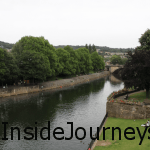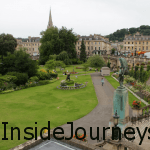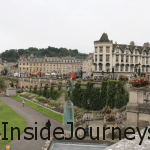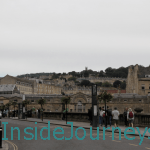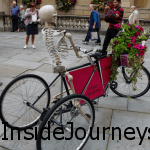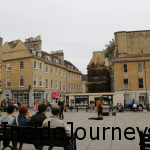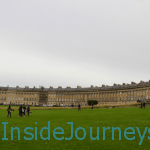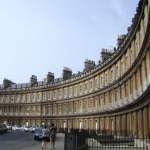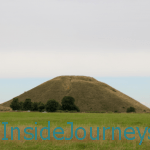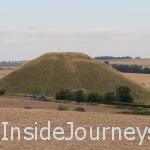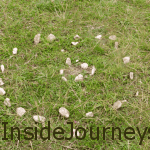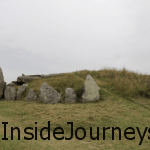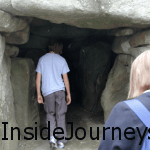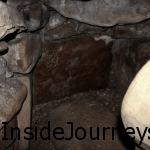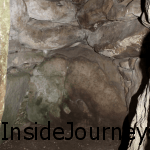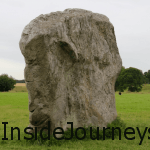After leaving Stonehenge, we drove through the English countryside towards Bath, arriving there just before lunch. Named World Heritage Site in 1987, Bath is a picturesque city located on the Avon River in Southwest England, and part of the south Cotswolds. Its well-known Great Bath (Bath Spa) and historic Georgian structures attract more than 250,000 visitors annually.
What Not to Miss in Bath:
- The Royal Crescent – Designed by John Wood the Younger, between 1767 and 1774, the 30 Georgian style terraced houses are laid out in a crescent shape.
- The Circus – John Wood the Elder began construction on the Circus, a group of Georgian style townhouses arranged in a circle, in 1754 but died before he could complete it. His son, John Wood the Younger, finished it in 1768
- Bath Abbey – The Abbey Church of Saint Peter and Saint Paul was founded in the 7th century.
- Pulteney Bridge – Completed in 1774, the bridge is one of four in the world that have shops that span its full length on both sides.
- Jane Austen House – the author of classics such as Pride and Prejudice, Mansfield Park, Sense and Sensibility, lived in Bath from 1801 – 1806. The center on Gay Street, about a 10 minute walk from the center of town tells the story of Austen’s time in Bath. There’s also a small gift shop with Jane Austen-themed goods. A must for Austen fans!
Westbury White Horse
The Westbury White Horse was not on our itinerary but it’s hard not to miss it standing as it does against the green Westbury Hill. The horse is 180 feet tall, 170 feet wide and was carved around 1778 into the chalk soil of the area.

Silbury Hill
At about 5,000 years old, Silbury Hill is about 130 feet high. It is the largest prehistoric mound in Europe. Made primarily of clay, which is all over the area, it is still unclear why it was created.
West Kennet Long Barrow
Located near Silbury Hill – you can see the hill from the barrow – and about 2 miles from Avebury, West Kennet Long Barrow is a prehistoric burial ground about 330 feet (100 meters) long. When its five chambers were excavated, the remains of about 40 adults and children who were buried around 3,600 BC were found along with grave goods, pottery and stone implements.
Avebury
I didn’t know what to expect as we headed towards Avebury from West Kennet Long Barrow. Then I noticed a few small upright stones. If this is it, I thought, I’m not impressed. But our driver kept going. Where was he going? I wondered.
As he continued, I started seeing more and more stones, planted in a row – like fence posts – and they seemed to go on and on.
Whereas the circle at Stonehenge is concentrated in a comparatively small area, Avebury’s circle and ditch are spread over nearly 30 acres.
That is impressive!
Constructed around 2600 BC, with three circles – the outer one measuring 1,088 feet, and a henge 460 feet across – Avebury is the largest stone circle in Europe. Unlike Stonehenge that is in a wide open area where you can see the circle clearly, Avebury’s circle and henge are part of the community with houses close by and a busy main road which dissects the site.

Although Avebury is free and open to the public, it wasn’t overrun by visitors as Stonehenge is. It also isn’t strictly controlled. While we were there, I saw people climbing on top of the stones, sitting on and posing for photos on them.
If you’d like to see a real henge monument up close and without the crowds, Avebury is the place to go.
Avebury and Stonehenge were co-listed, along with Durrington Walls, Woodhenge, West Kennet Long Barrow, Silbury Hill as Avebury, Stonehenge and Associated Sites, and were inscribed in 1986 to UNESCO World Heritage Sites.

Once you leave the site, walk over to the Red Lion – look left, look right, then left again before you cross the road – and have a glass of wine, a pint or some fish and chips. It’s not hard to miss.

PS: You won’t find a pub anywhere near Stonehenge!
Linking to Budget Travelers Sandbox, Rachel’s Ruminations, and Tanama Tales.


